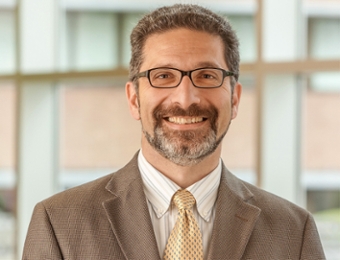In a previous post, we explored recent work conducted by UNMC ID faculty on untangling the pathogenesis of COVID-19. Medically speaking, that is only half of the story. In the effort to translate these observations about how SARS-CoV-2 makes us sick into treatments or vaccines, UNMC ID has been no less dedicated. Underscoring this point, read on for a research digest of three recent publications authored by UNMC ID faculty exploring COVID-19 treatment strategies.

In response to another viral outbreak, the Ebola epidemic of 2014-2016, the Centers for Disease Control and Prevention (CDC) designated 56 US hospitals as bona fide treatment centers for Ebola infections. UNMC was one of these sites. Now, with the COVID-19 pandemic, these centers have shifted their efforts to help treat patients with severe presentations of this infection. A recent study, co-authored by Dr. Angela Hewlett, looked at these Ebola treatment centers and how they responded to the current pandemic. They found that nearly 90% of the original facilities were still in operation and almost all of these sites were reported to positively affect the COVID-19 response in their regions. Read the full article here for the details including challenges that these vital centers face for continued operation.

In a research editorial authored by Dr. Natalia Castillo Almeida and Dr. Andre Kalil, the evidence for COVID-19 treatment with the antiviral medication molnupivavir was summarized. Specifically, this article analyzed results from two clinical trials which used this medication in patients with COVID-19. The article concluded that both studies found molnupivavir to be effective at preventing death from this illness, especially when used early in infection and in patients older than 60 years of age. These studies added molnupavir to the growing list of medications with some documented benefit in the effort to fight this pandemic. Read here for the full editorial, including the caveats and detailed benefits to molnupavir treatment.
(Note that knowledge surrounding COVID-19 treatments is rapidly growing, and data surrounding molnupivavir may have been refined since this article’s publication in December 2021)

Lastly, Dr. Kalil also recently co-authored another publication sounding the alarm on decreasing recruitment of patients into the randomized controlled trials which are the necessary for vaccine and treatment development. The article suggests that this could be due to a multitude of factors, including the observation that, in the time since vaccinations have become widespread, most of those with severe disease are unvaccinated and more likely to be hesitant of clinical trials. This article explores the various reasons cited for hesitancy in certain patient populations as well as expands on how to combat this hesitancy to ensure we can still develop the necessary treatments as the virus continues to shift. Read more here for the full analysis.